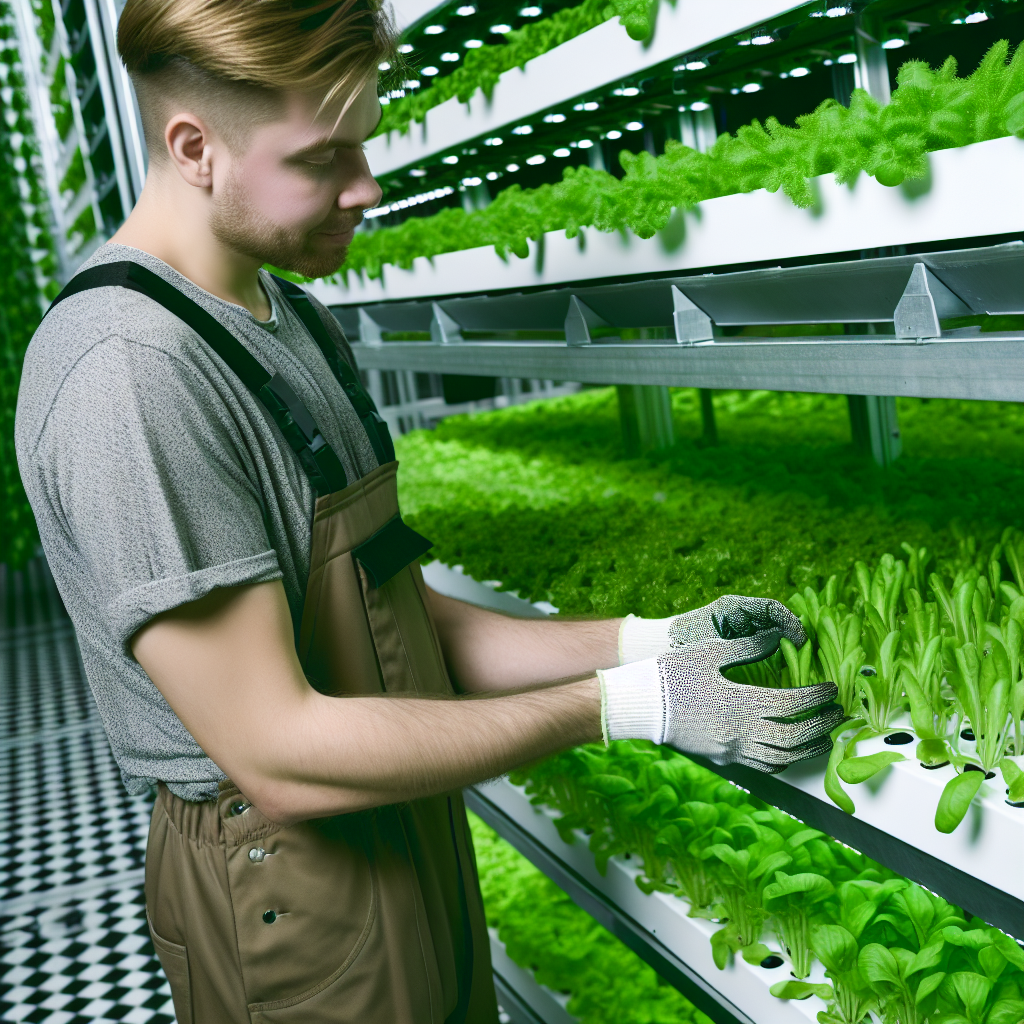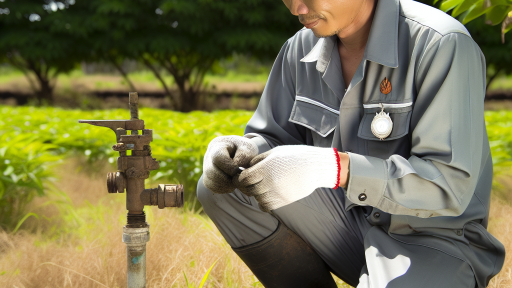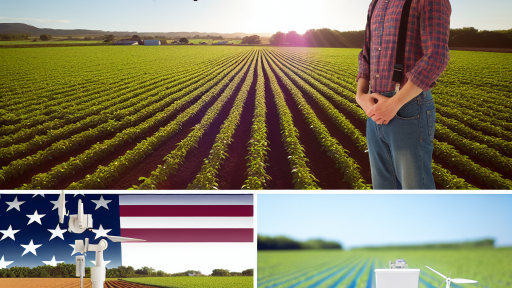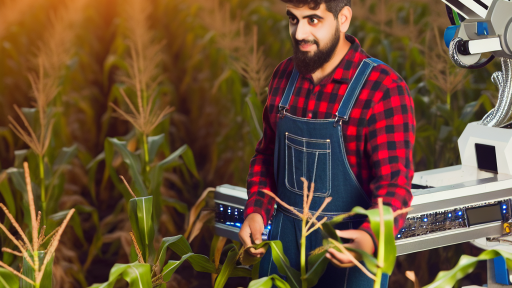Introduction to Vertical Farming
Definition of Vertical Farming
Vertical farming refers to the practice of growing crops in stacked layers.
This innovative approach maximizes space by utilizing vertical surfaces.
It employs controlled environments to optimize growth conditions.
Typically, vertical farms integrate advanced technologies such as hydroponics and aeroponics.
Importance of Vertical Farming
Vertical farming plays a crucial role in addressing food security concerns.
It allows for year-round crop production, independent of traditional growing seasons.
Moreover, it uses significantly less water compared to conventional farming methods.
This method reduces the need for pesticides and fertilizers, promoting healthier produce.
Additionally, vertical farming minimizes the carbon footprint associated with food transportation.
It enables local food production, reducing dependence on long supply chains.
Ultimately, vertical farming supports urban agriculture initiatives, enhancing sustainability.
Key Benefits of Sustainable Practices in Vertical Farming
Resource Efficiency
Sustainable vertical farming maximizes resource efficiency.
It optimizes water usage through recirculation systems.
Additionally, energy-efficient lighting reduces electricity consumption.
Furthermore, these practices minimize waste generation.
Transform Your Agribusiness
Unlock your farm's potential with expert advice tailored to your needs. Get actionable steps that drive real results.
Get StartedEffective composting and recycling of materials enhance sustainability.
Reduced Environmental Impact
Implementing sustainable practices significantly lowers environmental impact.
Vertical farming uses less land compared to traditional farming.
This approach helps in preserving natural habitats.
Moreover, reducing pesticide use minimizes chemical runoff.
Consequently, soil and water quality enhance in surrounding areas.
Improved Crop Yields
Sustainable practices can lead to higher crop yields.
Vertical farming allows for year-round production.
This constant output reduces seasonal variability in food supply.
Additionally, controlled environments optimize growing conditions.
As a result, healthier and more resilient crops emerge.
Support for Local Economies
Sustainable vertical farming boosts local economies.
It creates jobs in urban areas where farming is rare.
Local production decreases transportation costs and emissions.
Furthermore, it promotes community-supported agriculture initiatives.
Such initiatives connect consumers directly with their food sources.
Healthier Food Options
Sustainable practices in vertical farming yield healthier food options.
Locally grown produce retains freshness and nutritional quality.
Additionally, reduced pesticide use contributes to safer consumption.
Furthermore, these practices often encourage organic farming methods.
As a result, consumers access nutrient-rich food choices.
Water Management Techniques
Drip Irrigation
Drip irrigation efficiently delivers water directly to the plant roots.
This method minimizes water loss through evaporation and runoff.
It uses a network of tubing and emitters to control water usage.
Showcase Your Farming Business
Publish your professional farming services profile on our blog for a one-time fee of $200 and reach a dedicated audience of farmers and agribusiness owners.
Publish Your ProfileAs a result, it conserves water and reduces operating costs.
Farmers can achieve better plant health through consistent moisture levels.
Moreover, drip irrigation allows for precise nutrient management.
This technique is especially beneficial in vertical farming settings.
Farmers can customize watering schedules based on crop needs.
Recirculation Systems
Recirculation systems promote water recycling within farming operations.
They efficiently reuse water, minimizing waste and environmental impact.
This system collects excess water from the growing areas.
After treatment, it redistributes the water back to the plants.
Consequently, crop growth becomes more sustainable and predictable.
Additionally, recirculation systems help maintain nutrient levels in the water.
This enhances overall crop yields while reducing nutrient runoff.
Farmers may monitor system performance using technology for optimization.
The implementation of these systems fosters long-term sustainability.
Benefits of Sustainable Water Management
Effective water management increases resource efficiency in vertical farming.
It reduces dependence on external water sources significantly.
Farmers can contribute to local water conservation efforts as well.
Furthermore, sustainable practices enhance the resilience of food systems.
They prepare farmers for future climate-related challenges.
By adopting these techniques, operations can adapt to diverse environments.
Innovative water management fosters sustainable agriculture.
See Related Content: Automating Farm Operations for Increased Efficiency
Energy Efficiency Solutions
Renewable Energy Sources
Vertical farming operations benefit significantly from renewable energy sources.
Solar power stands out as a leading option.
Installing solar panels on rooftops enhances energy efficiency.
Additionally, wind energy can supplement power needs.
Wind turbines provide clean energy, especially in windy locations.
Biomass energy also offers a viable solution.
Using organic waste from farming to generate energy reduces overall costs.
Innovative companies are exploring geothermal energy for heating crops.
This method harnesses the earth’s natural heat effectively.
Energy Optimization Techniques
Optimizing energy use in vertical farms improves sustainability.
Effective lighting systems are crucial in vertical farming.
LED lights consume less electricity while promoting plant growth.
Growers use smart control systems to monitor energy consumption.
These systems automatically adjust light intensity based on plant needs.
Moreover, energy-efficient HVAC systems improve air circulation.
Proper insulation in farming structures reduces heating and cooling costs.
Implementing energy audits can identify areas for improvement.
Regular audits ensure that farms use energy as efficiently as possible.
Showcase Your Farming Business
Publish your professional farming services profile on our blog for a one-time fee of $200 and reach a dedicated audience of farmers and agribusiness owners.
Publish Your ProfileSmart Grids and Energy Storage
Smart grids play a pivotal role in managing energy in vertical farms.
They allow for real-time monitoring of energy usage.
This technology helps balance supply and demand for electricity.
Furthermore, integrating energy storage systems provides flexibility.
Storing excess energy during low-demand periods enhances efficiency.
Batteries can then supply power during peak hours.
This strategy ensures that farms remain operational during power outages.
Adopting these technologies positions farms at the forefront of sustainability.
Explore Further: Enhancing Crop Management With Robotics
Nutrient Recycling: Organic Waste Management in Vertical Farms
Importance of Nutrient Recycling
Nutrient recycling plays a vital role in vertical farming.
It reduces waste and conserves resources.
This practice enhances soil fertility and crop yields.
Strategies for Organic Waste Management
Vertical farms utilize several strategies for organic waste management.
Composting is one of the most effective methods.
It transforms organic waste into nutrient-rich compost.
Farmers can then use this compost to enrich their growing media.
Another strategy involves anaerobic digestion.
This process converts organic materials into biogas and digestate.
The biogas can be used for energy production.
Meanwhile, the digestate serves as a fertilizer.
Implementing Effective Systems
Creating a closed-loop system is essential for success.
Farmers should monitor nutrient levels regularly.
This practice helps maintain optimal growing conditions.
Additionally, integrating technology can enhance waste management.
Modern sensors can track organic waste levels in real-time.
This data helps manage nutrient recycling processes efficiently.
Impact on Sustainability
Organic waste management positively impacts sustainability.
It decreases reliance on synthetic fertilizers.
This shift reduces environmental pollution and promotes biodiversity.
Furthermore, efficient nutrient recycling minimizes water usage.
Healthy plants require less water due to improved soil health.
As a result, vertical farms can operate more sustainably.
Case Studies
Many vertical farms have successfully implemented these practices.
GreenSky Farms in Seattle showcases an effective composting approach.
They convert kitchen scraps and plant residues into compost annually.
Urban Growers Collective in Chicago utilizes anaerobic digestion.
This facility efficiently processes organic waste from local restaurants.
The resulting biogas powers their operations sustainably.
See Related Content: Implementing Vertical Farming Solutions on Your Farm

Pest Management Strategies
Understanding Integrated Pest Management
Integrated Pest Management, or IPM, is a sustainable approach to pest control.
Showcase Your Farming Business
Publish your professional farming services profile on our blog for a one-time fee of $200 and reach a dedicated audience of farmers and agribusiness owners.
Publish Your ProfileThis strategy combines different management techniques to minimize pest damage.
IPM focuses on the long-term prevention of pests through biological control, habitat manipulation, and resistant varieties.
Moreover, it promotes the use of natural predators and the least toxic control methods.
Key Techniques in IPM
Utilizing multiple strategies helps create a balanced ecosystem.
Some common techniques include monitoring, threshold levels, and preventive practices.
Regular monitoring of pest populations allows farmers to make informed decisions.
Setting action thresholds helps determine when to take action against pests.
Preventive practices can include crop rotation, sanitation, and habitat modification.
Biological Control Methods
Biological control involves using living organisms to manage pests.
This method introduces natural enemies, such as predatory insects or parasites.
For instance, releasing ladybugs can help control aphid populations.
Additionally, enhancing habitats for beneficial organisms can improve pest control naturally.
Cultural Control Tactics
Cultural controls alter the farming environment to reduce pest incidence.
Crop rotation disrupts pest life cycles and prevents buildup in the soil.
Proper sanitation practices remove debris that can serve as pest habitats.
Moreover, intercropping with different plant species confuses pests and reduces infestations.
Mechanical and Physical Controls
Mechanical controls involve using physical barriers to prevent pest access.
Examples include row covers, nets, or traps to catch unwanted insects.
Additionally, maintaining optimal environmental conditions can deter pests.
For instance, managing humidity and temperature can help keep pests in check.
Chemical Control Options
While IPM emphasizes diminished chemical use, certain situations may require them.
When using pesticides, opt for less harmful options such as insecticidal soaps.
Moreover, follow integrated practices to minimize non-target effects.
Whenever possible, apply chemicals during specific times to reduce harm to beneficial species.
Education and Training for Farmers
Education about pest management is crucial for effective implementation of IPM.
Farmers should receive continuous training on the latest IPM techniques.
Workshops and resources from agricultural extensions can provide valuable information.
Further, sharing experiences and successes fosters a community of learning.
Delve into the Subject: Monitoring and Managing Smart Irrigation Systems
Tech Innovations: Use of AI and IoT for Sustainable Monitoring
The Role of AI in Vertical Farming
Artificial intelligence plays a crucial role in vertical farming.
It enhances efficiency by automating various processes.
Farmers can leverage AI to analyze environmental data.
This analysis optimizes growth conditions for crops.
AI-powered systems provide real-time insights into plant health.
Integrating IoT for Smart Farming
Internet of Things (IoT) devices connect farming equipment to a network.
These devices collect data on temperature, humidity, and light levels.
This connection allows for precise climate control in growing environments.
IoT systems enable farmers to monitor crops remotely.
Automated alerts prompt timely interventions to prevent issues.
Benefits of AI and IoT in Sustainability
Combining AI and IoT significantly reduces resource waste.
Showcase Your Farming Business
Publish your professional farming services profile on our blog for a one-time fee of $200 and reach a dedicated audience of farmers and agribusiness owners.
Publish Your ProfileThese technologies minimize the use of water and fertilizers.
They also lower energy consumption within vertical farms.
Consequently, they lead to a smaller carbon footprint.
Enhanced sustainability improves the overall viability of farming operations.
Case Studies of Successful Implementations
Several companies showcase successful applications of these technologies.
For instance, GreenHouse Tech utilizes AI for predictive analytics.
They adjust their systems based on anticipated market demands.
FarmVision employs IoT sensors to achieve optimal conditions.
These innovations have resulted in higher yields and profitability.
Community Engagement: Building Local Support for Vertical Farming Initiatives
Understanding Community Needs
Community engagement begins with understanding local needs.
Each neighborhood has unique challenges related to food access.
Listening to residents can provide valuable insights.
Surveys and focus groups are excellent tools for gathering input.
Creating Educational Programs
Educational programs can inform the community about vertical farming.
Workshops can demonstrate sustainable practices and technology.
School partnerships can introduce students to agriculture concepts.
Moreover, cooking classes can showcase the benefits of fresh produce.
Establishing Partnerships
Building relationships with local organizations enhances community support.
Partnering with schools, health clinics, and non-profits is beneficial.
These collaborations can address food insecurity effectively.
Additionally, businesses can support initiatives through sponsorships or resources.
Encouraging Volunteer Opportunities
Volunteering creates a sense of ownership among community members.
Organizing events such as planting days can foster engagement.
Volunteers can help to maintain and harvest crops.
This collective effort strengthens community bonds while promoting sustainability.
Utilizing Social Media for Outreach
Social media platforms are crucial for outreach efforts.
Sharing updates, events, and educational content can engage residents.
Online campaigns can attract more volunteers and participants.
Moreover, local influencers can amplify the message.
Gathering Feedback for Continuous Improvement
Continuous community feedback is essential for success.
Regular surveys can assess community perceptions and needs.
Adjusting programs based on feedback fosters trust and loyalty.
Furthermore, it demonstrates a commitment to community well-being.
Additional Resources
New Agriculture Technology in Modern Farming
Agriculture Innovation: 10 Tech Trends to Watch in 2023 …
[E-Books for Sale]
500 Farming Tax Laws Simplified: The Ultimate Global Guide for Farmers
$19.99 • 500 Farming Tax Laws • 154 pages
Maximize your farm’s savings with 500 simplified tax laws, tips, and strategies in this essential farmer’s guide!
See All 500 Farming Tax Laws of this E-Book
2,000 Technological Solutions to Revolutionize Your Agribusiness: A Comprehensive Global Guide for Farmers
$19.99 • 2,000 Technological Solutions • 343 pages
Discover 2,000 cutting-edge technologies to transform your agribusiness. Boost productivity and sustainability today!




